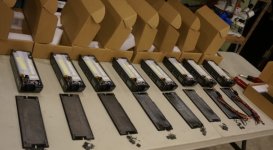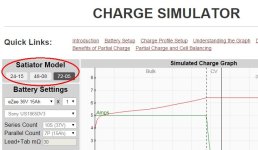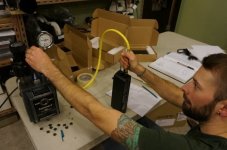And we have it! After some agonizing months sorting out last minute issues we're ready to make available both the 24V 15A version and high voltage 72V 5A Satiator devices. It's a pretty limited run, with about 15 pieces of the 24V unit at ~80 pieces of the 72V devices available in total.

The 72V unit has a max output of 103Volts so you can use it with up to 24S packs, but otherwise looks just like the standard 48V Satiators with the XLR output cable and is available here
http://www.ebikes.ca/shop/experimental/satiator7205.html
The 24V unit has a max output of 30V, so good for 7s lithium or 8s LiFePO4, but because of the higher current output we couldn't use the connectorized output on the Satiator so instead it's 4 conductors going through a grommet. A DC+, DC-, communication signal, and the 4th wire is to use as an optional remote LED indicator for future firmware releases, since our assumption is that the 24V unit is more likely to have traction in onboard OEM applications. Anyways it's available here:
http://www.ebikes.ca/shop/experimental/satiator2415.html
For both these chargers we have not yet gotten the UL and CSA test certification, that's scheduled to happen in January of next year, and for some CYA reasons we'll be confirming with everyone who places and order to ensure that they understand that the device does not have regulatory approval. You can make that easy by stating as much in the comments of the order checkout, like "I understand that this is a beta/pilot charger which does not have regulatory test approval". Hopefully that's not too much of a disincentive, since we're in a funny situation of needing to sell these devices to raise the $20K needed to pay for the lab certification testing

Anyways I hope this is in time to make the christmas list of a few eager ES'ers. We should have shipments going out starting tomorrow or Friday. I'll have posts by Friday with an updated satiator software suite that automatically detects which model you have plugged in and adjust the voltage/current limits accordingly. And you may have noticed that we've also added the 24V and 72V Satiator support in our charge simulator web app too:
http://www.ebikes.ca/tools/charge-simulator.html





